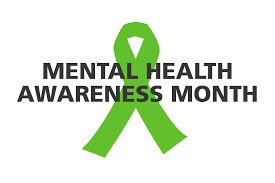May is officially Mental Health Awareness Month. The Mental Health America Organization declared May as Mental Health Awareness month in 1949, hoping to shift Americans’ viewpoints of mental health into a more proactive, responsive attitude. Each year, the organization releases a theme for the month of May that involves mental health. This year’s topic of discussion is Risky Business.
“We believe it’s important to educate people about habits and behaviors that increase the risk of developing or exacerbating mental illnesses, or could be signs of mental health problems themselves,” wrote the Mental Health America Organization on their website (www.mentalhealthamerica.net).
Here are some facts and information about mental health and its abuse:
Prescription drug abuse:
Information
- Just over seven percent of people 12 and older misused prescription drugs in the last year.
- 12.5 million misused opioid pain relievers, 6.1 million misused tranquilizers, 5.3 million misused stimulants, 1.5 million misused sedatives
- The use of prescription drugs and their inaccessibility forces people addicted to the drugs’ effects to seek cheaper street drugs such as heroin or oxycontin.
- People with poor mental health are three times more likely to misuse prescription drugs, and later, street drugs.
- Over 3.2 million people met the criteria for a prescription drug use disorder in the past year
How to address drug abuse in a healthy way:
- Talk to your doctor about non-addictive options for treating your medical condition if you feel at risk for misusing prescription drugs.
- Restrict access to medication from those who may want to misuse the drugs
- Dispose of unused or expired medication at safe medical kiosks. Walgreens has many drop-off sites around the country. A quick web search at bit.ly/kiosk2017 will provide you with the closest kiosk.
Anxiety:
Information
- Over 21 percent of Adults between 18-64 show symptoms of an anxiety disorder (42.5 million)
- Many people with an anxiety disorder experience chest pain, rapid heartbeat, blackouts, difficulty breathing, nausea, muscle tension, and headaches during a panic or anxiety attack
- The disorder also consists of worrisome thoughts, nightmares, anticipating the worst, and a desire to avoid events that would typically trigger an attack.
- Anxiety disorders interfere with a person’s day-to-day life.
How to address anxiety in a healthy way:
- Communicate with a parent, friend, or trustworthy adult about your anxiety for support.
- Find an activity that helps with your stress levels and has a calming effect
- Focus on small things you can control that will make the bigger events less stressful
Depression
Information
- In 2014, around seven percent of adults had a major depressive episode (15.7 million people). This is enough people to fill every football and Major League Baseball Stadium over four times.
- Major Depressive disorder effects of 16 million Americans each year.
- Depression can be biological, cognitive, based on your gender, and can be genetic and part of your family history.
How to address depression in a healthy way:
- Find a support system that you can talk to if experiencing depressive thoughts.
- Eat well, sleep the proper amount each night, and maintain healthy relationships with friends and family.
- Identify signs and symptoms of developing depression: lack of interest in everyday activities, negative thoughts about life, avoidance of events.
If you are struggling with mental health, please talk to your counselors or a trustworthy adult. You can also get in contact with Godwin’s “No Eagle Left Behind”.
Further information can be found on


Be the first to comment on "Mental health month- by Online Editor-in-Chief Emma Ford"